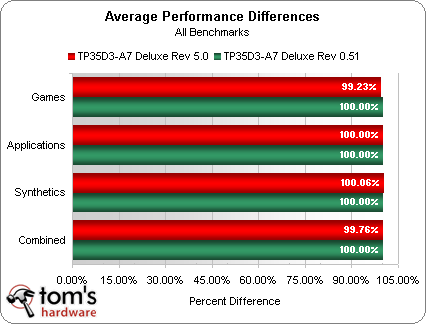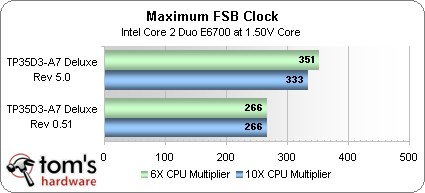Biostar's 'New-and-Improved' P35-DDR3 Motherboard
Improvements
Before testing overclocking improvements, it's important to make sure that the changes between motherboard revisions haven't caused a significant decrease in performance. Hardware and software configurations were carried forward from our earlier P35-DDR3 motherboard comparison, but the board itself was updated to BIOS version P35AA615 (6/15/2007).
The new board suffered a net performance loss of less than a quarter of one percent. Let's see how much it gains in overclocking capability:
Revision 5.0 of Biostar's TP35D3-A7 Deluxe clocked an Intel Core 2 Duo E6700 normally capable of 3.46 GHz at 1.50 volts to only 3.33 GHz. Dropping the multiplier to 6x allowed the board to push a maximum stable FSB clock of 351 MHz (FSB1404), which is a relatively low result that only seems impressive when comparing the board to its previous revision.
Conclusion
Biostar has overcome a major limitation of its earlier TP35D3-A7 Deluxe by making Revision 5.0 overclockable, but it cannot surpass the faster clock speeds several competing boards offer. Buyers who aren't seeking a mobo for overclocking will want to consider the board based on its many other virtues, which we described in our earlier review.
Join our discussion on this topic
Get Tom's Hardware's best news and in-depth reviews, straight to your inbox.


